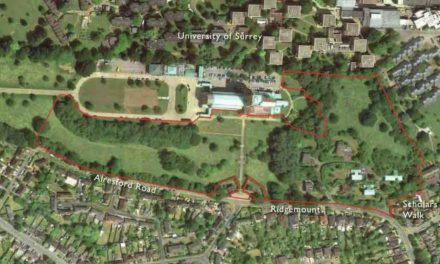Property consultancy and Thames Tap partner Vail Williams LLP asks how radical the recent planning reforms are and explores whether they will they make a meaningful difference to the drive to build ‘better, greener and faster’.
A range of changes to Permitted Development Rights and planning use classes were set out in July – the latter, arguably, one of the most significant loosenings of regulatory control in the planning system for quite some time.
The aim of the changes, briefly set out below, is to encourage more housebuilding on existing sites and to allow greater flexibility of uses for town centres.
Summary
Use class changes (effective from September 1, 2020 onwards)
- New Class E use will replace the previous A1, A2, A3, B1(a, b and c) and some D1 and D2 uses
- Class F1 use for non-residential institutions will replace remaining D1 uses
- Class F2 use for community uses will replace D2
Permitted Development changes (from August 31, 2020)
- Ability to demolish B1 (a, b and c) buildings (under 1,000 sqm) built before 31 December 1989 and rebuild residential
- Ability to carry out upward extensions (up to two storeys) for existing commercial and mixed uses (Class A1, A2, A3 and B1(a) uses)
- Allowing upward extensions (up to 2 storeys) for existing residential buildings to create new flats
- Enabling upward extensions (up to 2 storeys) to enlarge an existing dwelling
A ‘Class E’ move?
When it comes to the potential implications of the revisions to use classes, it’s true that there will be a lot more flexibility as a result of what has been announced, which could aid economic recovery.
This may include providing flexibility for leisure uses or nurseries in the ground floors of office buildings without the need for planning permission, as landlords seek to provide more amenities for their tenants.
It could allow the occupation of newly vacant buildings to accommodate alternative uses much quicker than if tenants and landowners were faced with the prospect of an eight-12-plus week wait on obtaining planning permission for an alternative use.
De-regularising this area of planning could allow market forces to drive changes to the high street without planning restriction.
Not only this, there could be opportunities for leisure units to occupy office or retail premises where previously this would have been challenged through planning and it may not be necessary to demonstrate a 12 to 18-month marketing period.
Additionally, proposals which were refused due to the loss of employment or retail floorspace could now come forward, providing they sit within the Class E use.
The drawbacks
However, there are potential implications for existing tenants who may find that their neighbours, in a year or two, are very different to whom they are now. Office tenants in what was formerly an ‘office only’ area may find more non-employment uses around them – some of which may not be desirable.
The new use class carries with it huge risk for councils in terms of plan-making and strategies for development.
If councils no longer have control over the proportion of A1 retail units on their high streets that can be retained, they effectively lose control over the high street and with it, their ability to look at a more holistic approach to planning town centres.
Not only that, for those councils relying on one or two large business parks for their office supply, restrictive employment allocations, which largely prohibited non-office uses, may now result in accommodating a much broader range of uses than previously imagined.
Whilst we’re unlikely to see entire office parks converted for retail use, it will become more difficult for councils to effectively manage the employment requirement in their Local Plans as a result of the changes announced.
There could (subject to legal debate) even be the possibility of restrictive s106 clauses or conditions limiting the range of uses within Class E on any future employment development, however much the existing allocations could be at risk.
Permitted Development Rights – or are they?
When it comes to the new Permitted Development Rights, it’s rather like lockdown easing – subject to a million-and-one caveats. You can do this – but you might not be able to. But if you can, then you should. But perhaps you can’t. In which case don’t…. You get the idea.
The new rights are complex and applicants will likely require planning and even legal advice to determine if the rights are applicable to their building.
Some criteria may not be simple to resolve and will require technical input before submitting prior approval applications. This brings into question just how beneficial this new route will be over submitting a full planning application.
What is more, the demolition of existing residential blocks and some B1 buildings with replacement by new residential development, is controversial as it may result in ad hoc and poor-quality buildings being incorporated into the built environment.
There is also the wider question over whether the demolition of a commercial building for it to be rebuilt as a residential-only building is the most sustainable approach to development.
You could argue that it is more sustainable to seek to re-use as many buildings as possible through increasing flexibility in use, rather than simply knocking them down.
Whilst the new rights do include provisions for natural lighting in new dwellings, there may be objections to the absence of any internal space standards, amenity spaces and affordable housing (or any other) s106 payments, subject to further debate, as has been prevalent in the planning press lately.
Interestingly, existing Article 4 Directions, removing Permitted Development Rights to convert offices to residential buildings would not cover the new right to demolish and rebuild offices.
This could prove to be a useful opportunity for developers / landowners to explore, subject to site-specific constraints, before local planning authorities can restrict the further loss of employment space.
No doubt we will find out more in the eagerly-awaited planning White Paper which is due to be published imminently. But if the latest announcements are anything to go by, the industry awaits this with some trepidation!
In the meantime, if you would like to discuss what the changes mean for one of your investments, or indeed for your local planning authority, don’t hesitate to contact Vail Williams’ planning team for more information.
© Thames Tap No 221 (powered by ukpropertyforums.com).
Please rate this article out of five stars below. You can comment too, using the form at the bottom of the page.













